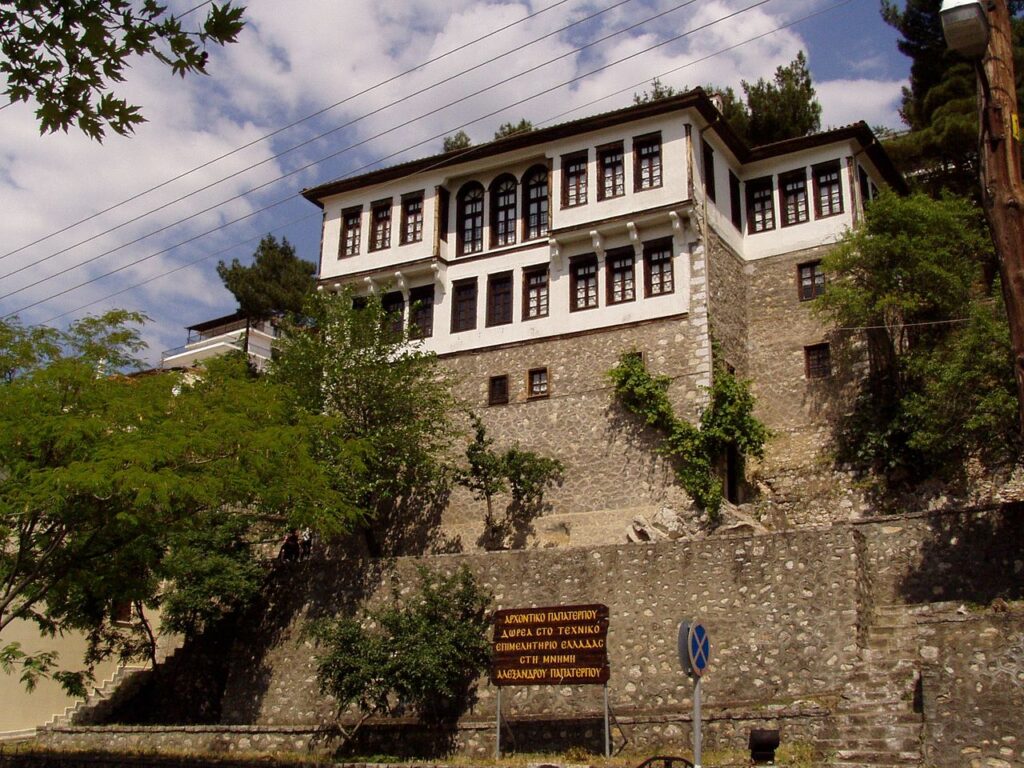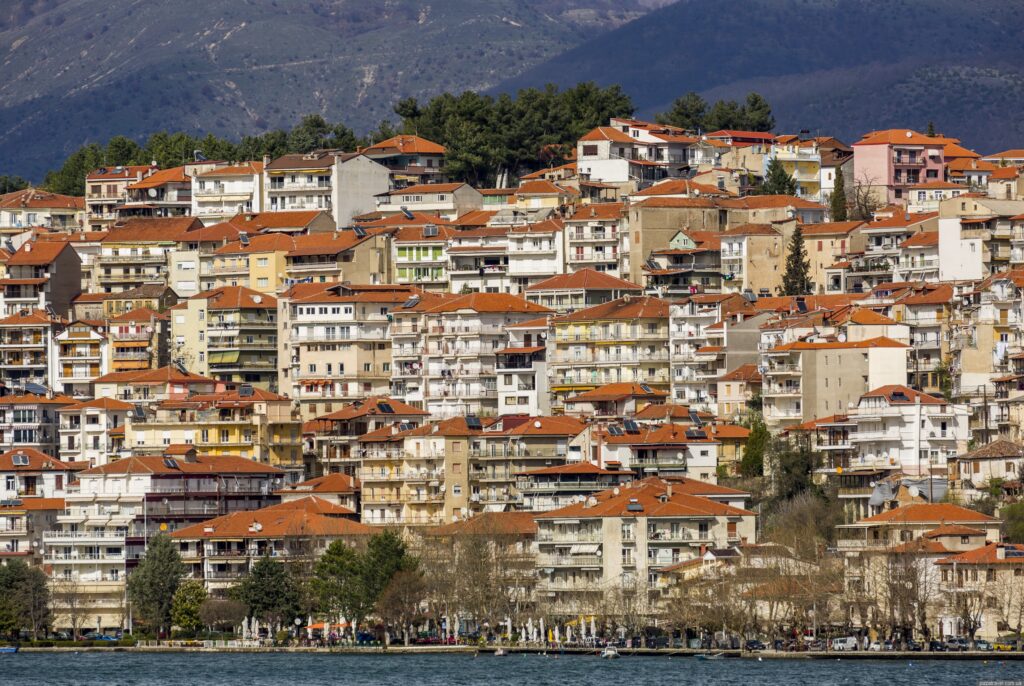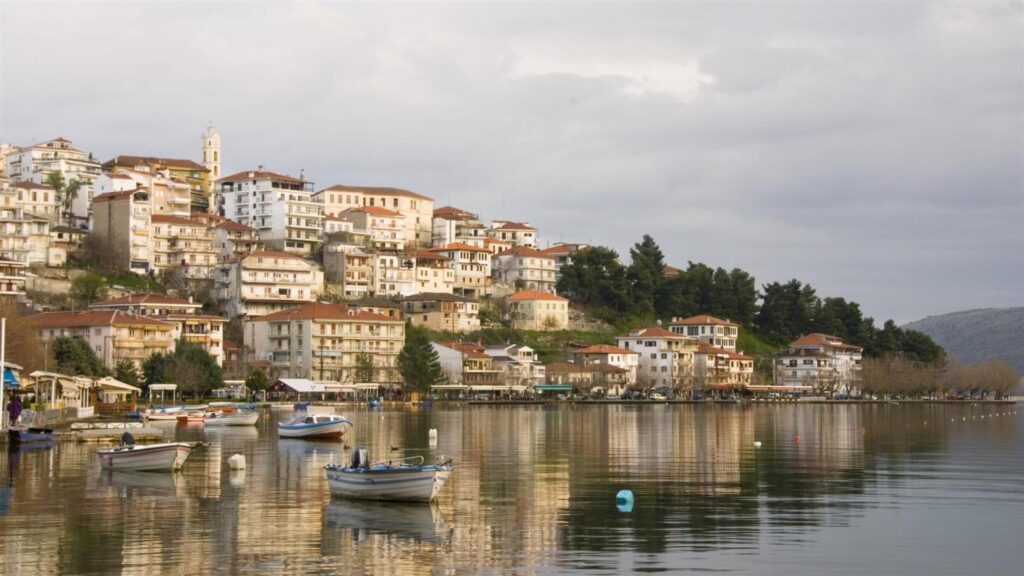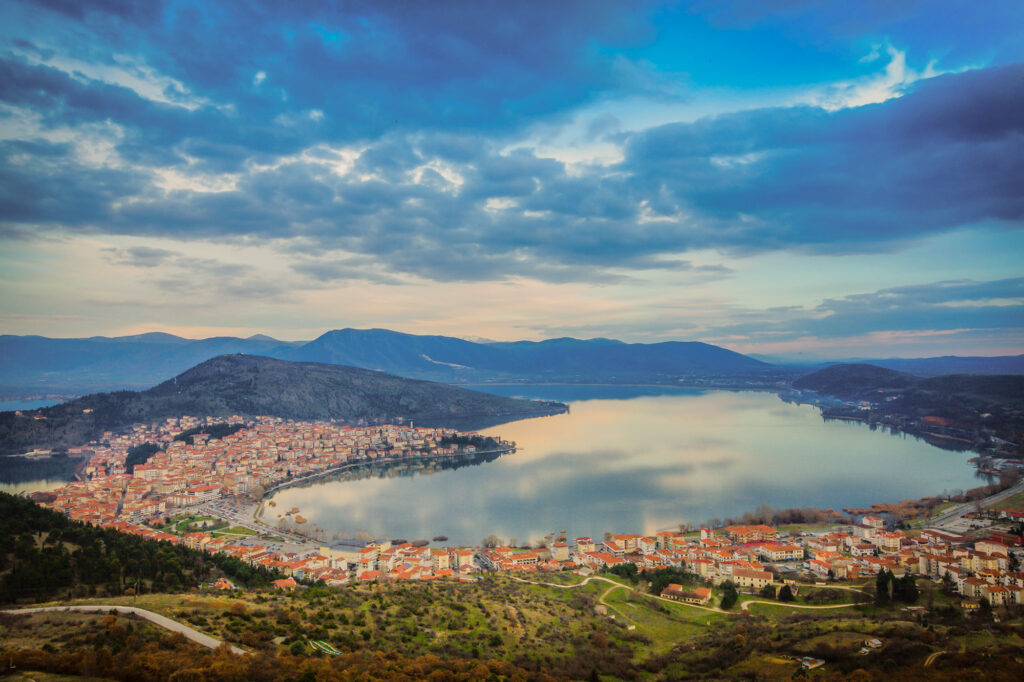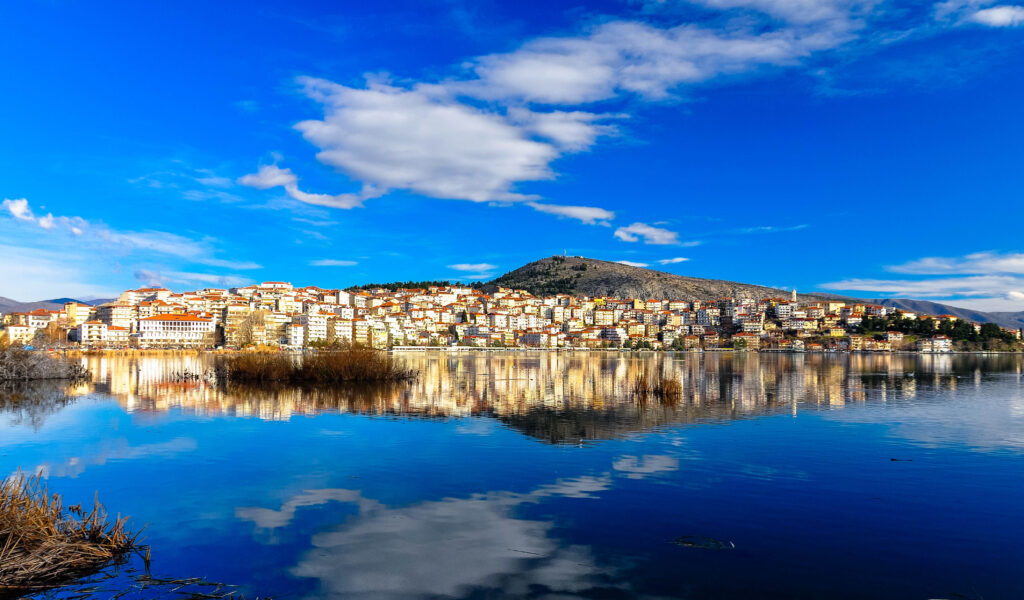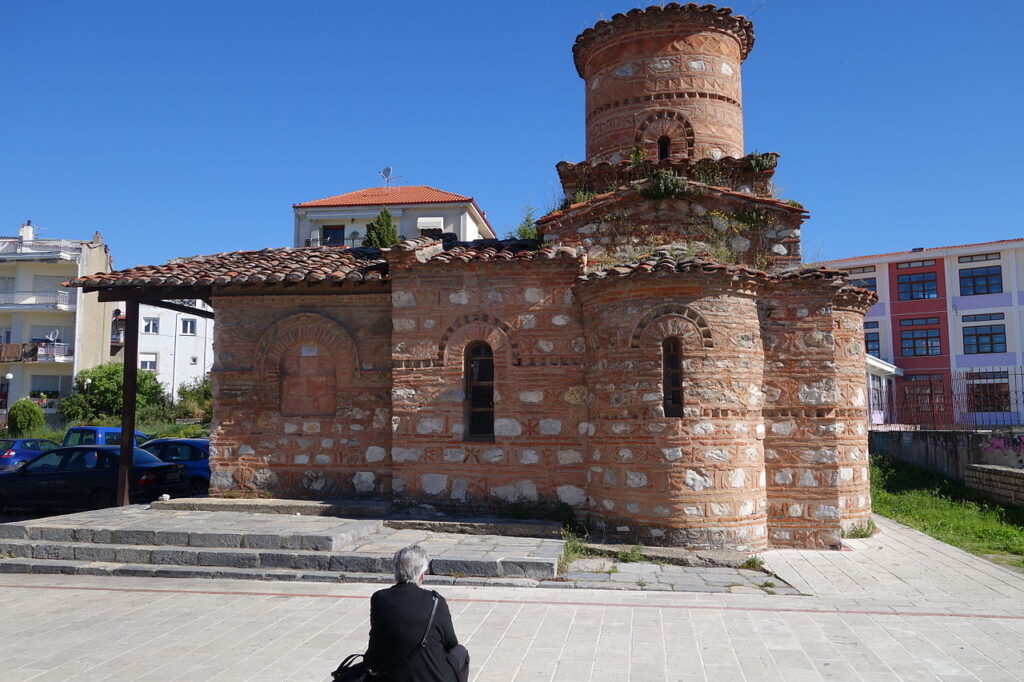Kastoria is a city in northern Greece in the region of Western Macedonia. It is the capital of Kastoria regional unit, in the geographic region of Macedonia. It is situated on a promontory on the western shore of Lake Orestiada, in a valley surrounded by limestone mountains. The town is known for its many Byzantine churches, Byzantine and Ottoman-era domestic architecture, its lake and its fur clothing industry.
Landmarks
Religious Sites
Kastoria is an important religious centre for the Greek Orthodox Church and is the seat of a metropolitan bishop. The Metropolis of Kastoria is one of the metropolises of the New Lands in Greece, administered as part of the Church of Greece. Kastoria originally had 72 Byzantine and medieval churches, of which 54 have survived,[2] including St Athanasius of Mouzaki. Some of these have been restored and provide useful insight into trends in Late Byzantine styles of architecture and fresco painting.
Kastoria used to have two Bektashi tekkes and three Bektashi türbes. The first was situated at the entrance to the town on the road from Florina and was said to be particularly “ancient” and formerly important. It suffered during the 1826 persecution. Its chief saint, buried there, was one of the early Bektashi missionaries named Kasim Baba who is said to have lived during the time of Turkish conquest and, according to folk history was a “posthumous miracle worker” and converted many local Christians by causing a huge rock to crash into the local church. However this tekke was suppressed under a Sunni crackdown in the 19th century. Another notable tekke was located at Toplitza, near the barracks, and contained a turbe with the grave of a local notable Sandjakdar Ali Baba. There was also a turbe on the outskirts of the gypsy quarter to Aydin Baba.
Museums
The Museum of Byzantine History located on Dexamenis Square houses many examples of Byzantine iconography. The Costume Museum and the Monuments Museum are also located in the city. In the village of Kastanofyto lies the Folklore Museum (Kastanofyto), which preserves folk traditions from the local area.
Kastoria is filled with old manors dating to the Ottoman period, while parts of the old Byzantine walls also stand.
Bridges
Stone bridges are an important part of the traditional architecture of Kastoria. The best known is the bridge of Zouzouli, the bridge of Koromilia, the Koutsoumpli bridge and the bridge in Beriki.
The Bridge of Zouzouli, located in a remote area on the southern tip of the prefecture of Kastoria, is built over the waters of the stream of Zouzouli and connects mt. Smolikas with mt. Voios. It is arched, has a length of 25 meters and a height of 7 meters. Constructed in 1880 by artisans coming from Konitsa. The construction was financed from either a man, in memory of his brother who drowned in the river, or from a ruler who, moved by the drowning of a little girl, wanted to build the bridge.
The bridge of Koutsoumpli is located between the mountains of Voio and Smolikas, over the river of Zouzouli and it previously connected the villages of Eptachori and Zouzouli. Its arch is 14 meters wide, 8 meters high and it has a total length of 33 meters and a width of 2.40 meters.
The bridge in Beriki has a very thin arch and a great height. It was manufactured by master builder Sdrolios, who came from the village of Ntempeni (now Dendrochori), probably in 1866. Next to the bridge there was possibly a watermill and an inn. Probably, this is where the name of the region came from (inn Beriki).
The bridge of Koromilia is built over the Ladopotamos river and it used to connected the village of Koromilia with the one of Dendrochori. It is arched and has a length of 26 meters, a width of 2.80 meters, a height of 7 meters and an arch opening of 16 meters. It was built in 1865 and consists of limestone and schist slate.
Education
The School of Sciences of University of Western Macedonia with two departments (Informatics and Mathematics) based in the city as well as the departments of Communication and Digital Media and Economics.
Cuisine
Local specialities include:
- Giouvetsi (meat with pasta in tomato sauce)
- Garoufa (Grivadi soup)
- Pestrofa (trout)
- Sarmades (meatballs wrapped with pickled cabbage)
- Makálo (meatballs with garlic sauce)
- Kolokythopita (pumpkin pie)
- Kremmydopita (onion pie)
- Milk Pie (dessert)
- Sáliaroi (dessert)
Economy
Kastoria is a popular tourist destination and an international centre of fur trade, having taken so the nickname the city of the fur traders. Tourism and the fur industry dominate the local economy. Indeed, (as mentioned above) the town was possibly named after one of the former staples of the trade – the European beaver (kastóri in Greek), now extinct in the area. Trading in mink fur now predominates and every year an international showcase of fur takes place in the city. Fur trade is the biggest factor of Kastoria economy and it started back to the 14th century when the city provided the ermine pelts for the lining of the robes of the Byzantine courtiers. Early traders settled in Russia and Germany. After Germany’s division at the end of World War II, the fur center moved from Leipzig to Frankfurt. During the Greek Civil War in the late 1940s, thousands of Kastorians migrated to the United States to take the place of aging Jewish immigrants who had formed the core of New York furriers. In 1984, 25,000 Kastorians were working and living in the area of New York, and 10,000 in Frankfurt.
Now there are more than 300 small and big dealers in fur in Kastoria. Other industries include the sale and distribution of locally grown produce, particularly wheat, apples, wine and fish. Recently a large shopping center has been built in the city of Kastoria. Kastoria has 16 local radio stations, 2 TV stations, 5 daily newspapers and 7 weekly ones. The town’s airport is named Aristotelis Airport.

